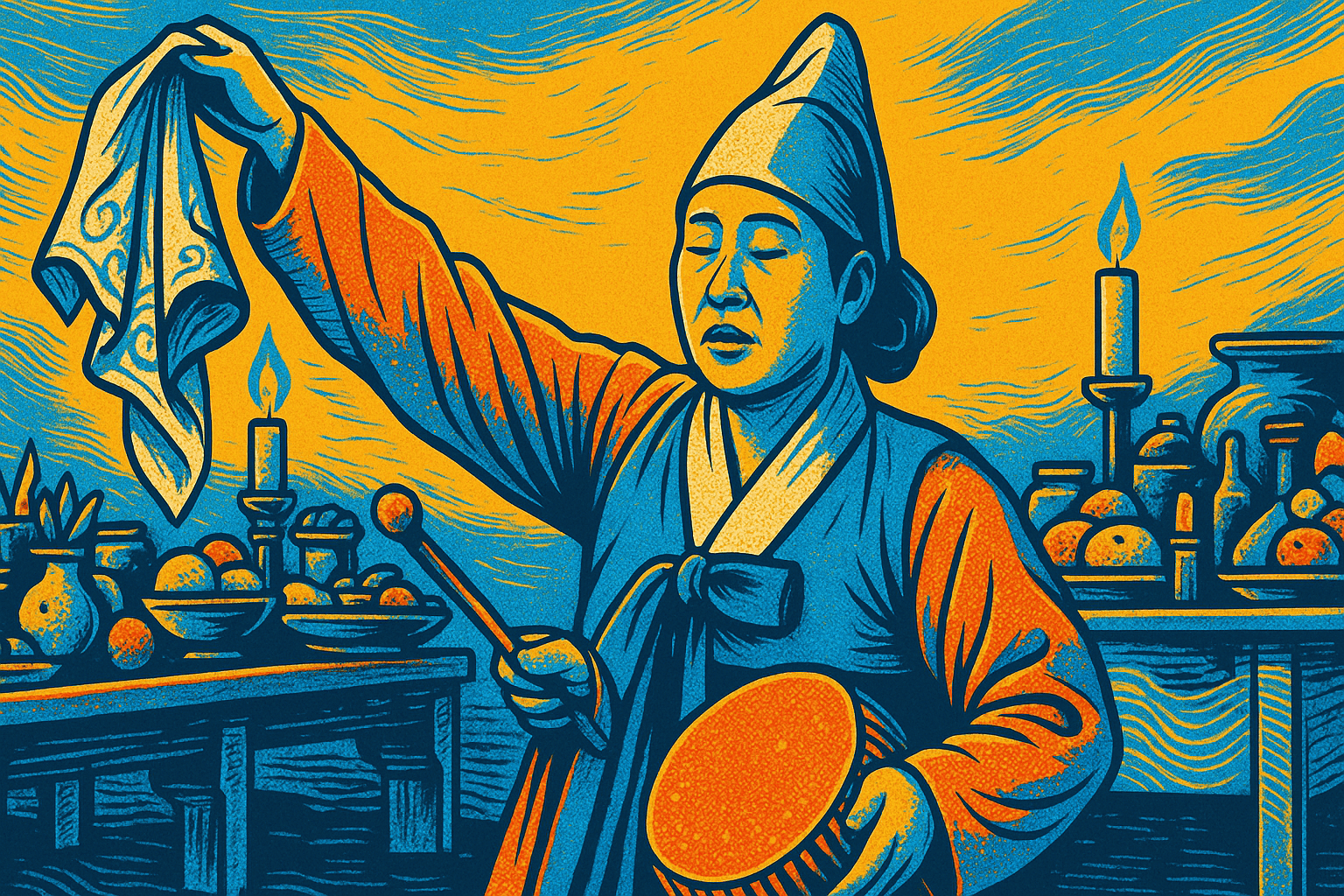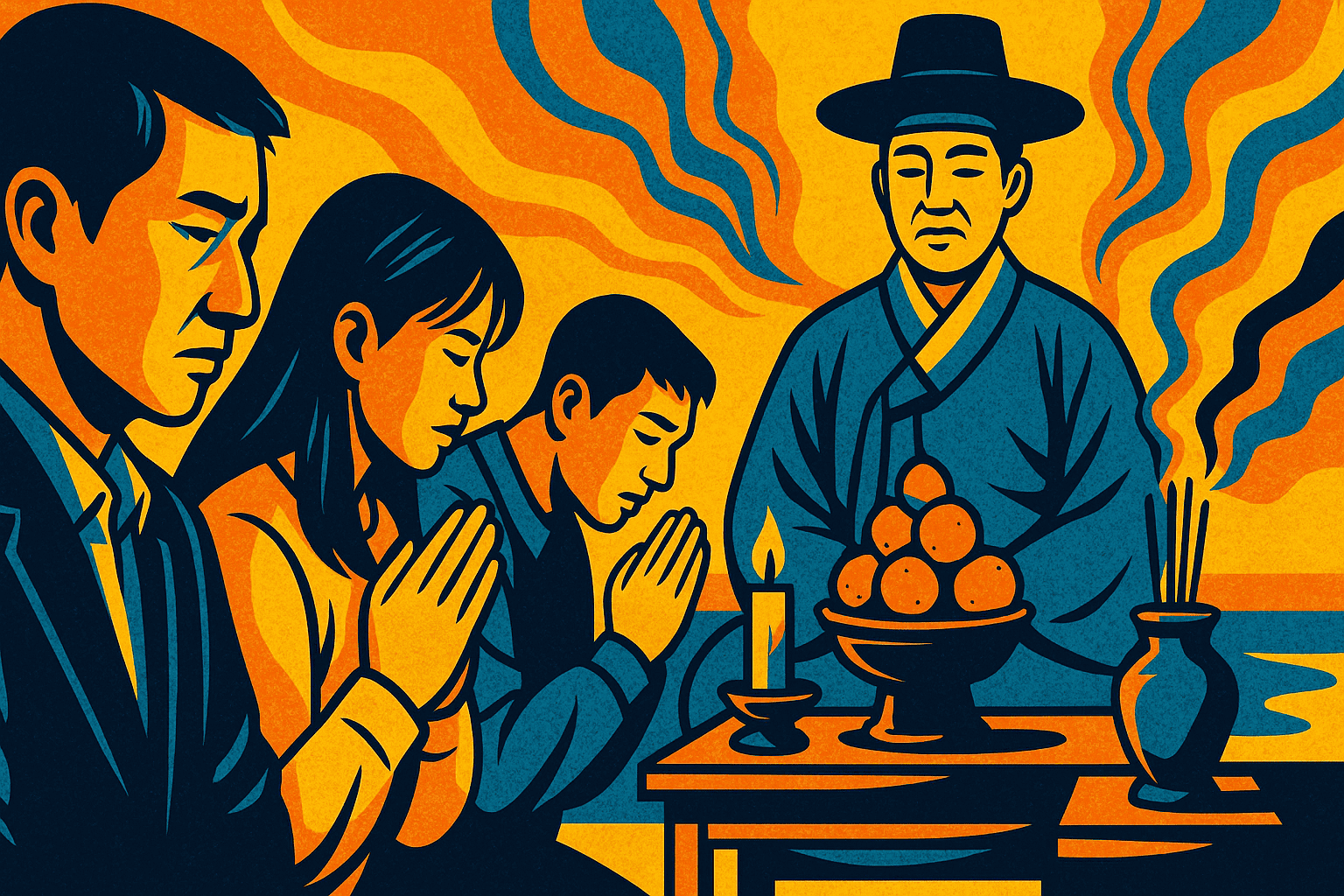What is the Oldest Religion ever existed in Korea? When this is asked, we step into a world that connects history, mythology, and social values. Exploring this topic is fascinating because it reveals not only Korea’s spiritual roots but also its influence on the country’s identity today. By reviewing this ancient religion, we can better understand how it shaped customs, rituals, and beliefs that still influence modern Korean life. For readers interested in history, philosophy, or spirituality, this exploration is more than just an academic exercise—it’s an opportunity to uncover the backbone of a nation’s heritage. In the vast landscape of K-Drama, K-pop, and Korean cuisine, religion often goes unnoticed. Yet, when we explore it, we discover timeless wisdom that withstand centuries of cultural change and reveals how spiritual practices intertwine with culture, family, and even politics.
Overview of what the Oldest Religion is
Historians widely recognize Shamanism as the oldest religion in Korea, predating the arrival of Buddhism and Confucianism. Shamanism deeply shaped the daily lives of Koreans, influencing rituals, festivals, and community practices. At its core, the faith is about connecting the physical world with the spiritual realm through shamans, known as mudang. Their role was to serve as intermediaries, performing ceremonies to heal illnesses, protect families, and ensure prosperity.
What are the essential elements of Korean Shamanism? the answers lie in rituals, symbolic objects, and myths. Traditional instruments, colorful costumes, and dance were integral to these ceremonies. The practice was never codified in sacred texts but instead passed down orally. This flexibility allowed Shamanism to adapt over centuries, coexisting with other religions while retaining its identity. Despite modernization, many Koreans still participate in Shamanistic rituals today, showing the endurance of this ancient belief system. This continued presence highlights how ancient faith systems adapt while maintaining cultural importance.

What is the Oldest Religion and Pros
One of the strongest positives of Shamanism is its cultural adaptability. Unlike rigid religions, it evolved alongside Korean society. Another positive lies in the question, what are the benefits of oral tradition? Oral storytelling gave Shamanism flexibility and inclusivity, allowing each community to tailor practices to their needs.
Additionally, Shamanism is highly community-centered. Ceremonies often brought entire villages together, reinforcing social bonds. Its rituals also provided emotional and psychological relief during times of uncertainty. For example, healing rites were not only medical substitutes but also psychological support systems. The religion’s emphasis on harmony with nature is another benefit, as it encouraged respect for the environment and natural cycles.
What is the Oldest Religion and Cons
Although Shamanism holds immense cultural value, it also has drawbacks. One major criticism is the lack of formal scriptures, which makes it vulnerable to distortion or misinterpretation. A recurring debate centers around what are the limitations of oral traditions? Without written texts, preservation depends heavily on memory and ritual performance, which risks being lost over time.
Another concern is superstition. Some skeptics argue that reliance on shamans and rituals has at times hindered scientific or medical progress. The financial burden is also a drawback, as elaborate ceremonies can be costly, making them inaccessible to the poor.
Shamanism also struggled under modern pressures. During Korea’s push toward modernization, it was sometimes labeled backward or unscientific. Even today, many view it as folklore rather than a legitimate faith. Finally, gender roles within the tradition—where most shamans are women—created both empowerment and marginalization, depending on social context.
In-Depth Analysis
Historical Context
When reviewing what are the earliest signs of Korean Shamanism, historians point to prehistoric cave paintings, myths of Dangun (the legendary founder of Korea), and seasonal festivals. These suggest that the religion predates organized states and served as the foundation of Korean spirituality.
Functionality in Society
Shamanism’s functionality lay in its versatility. Shamans mediated between gods, ancestors, and humans, addressing problems like illness or misfortune. Their ability to adapt rituals for specific needs made the practice practical for ordinary people.
Design of Rituals
The design of Shamanistic ceremonies was rich in symbolism. Costumes featured vibrant colors, drums set rhythms, and dances expressed emotion. Each element symbolized a bridge between earthly and spiritual realms. If one asks, what are the symbolic meanings behind these designs?—they represent life, death, fertility, and prosperity.
Impact on Modern Culture
Shamanism’s influence extends into art, literature, and K-Dramas, where shaman characters often appear. Despite modernization, many Koreans still visit shamans for blessings or fortune-telling, showing how this ancient practice still resonates today.
To understand Shamanism more, here’s a video you can watch:
Comparison
To understand Shamanism’s place, it’s worth comparing it with Buddhism and Confucianism, which entered Korea later. Unlike Shamanism’s oral and flexible traditions, Buddhism brought formal scriptures, temples, and philosophical depth. Confucianism emphasized social order, family values, and education, shaping Korea’s political and cultural framework.
| Aspect | Details |
|---|---|
| Oldest religion in Korea | Shamanism |
| Recognition | Less globally recognized than Buddhism or Christianity |
| Influence | Deeply embedded in Korean traditions and identity |
| Strengths | Adaptability, community bonding, harmony with nature |
| Challenges | Perception issues, preservation difficulties |
| Cultural significance | Foundation for understanding Korean spirituality and heritage |
| Broader reflection | Raises questions about what cultural heritage should be protected today |
Conclusion
Shamanism is the answer when we ask, what is the oldest religion ever existed in Korea. It may not carry the global recognition of Buddhism or Christianity, but its influence runs deep in Korean traditions and identity. Its strengths lie in adaptability, community bonding, and harmony with nature, though it faces challenges in perception and preservation.
Ultimately, reviewing Shamanism helps us better understand Korea’s cultural foundation. For readers curious about spirituality and history, it offers a timeless lesson in resilience and identity. Exploring it also raises a greater question: what are the elements of cultural heritage worth protecting in our modern world?
Rating
⭐⭐⭐⭐ (4/5)
Shamanism remains a vital yet underrated aspect of Korea’s cultural and spiritual journey.
FAQ
What is the oldest religion in Korea?
The oldest religion in Korea is Shamanism. It predates Buddhism and Confucianism, shaping rituals, festivals, and cultural traditions. At its core, it connects the physical and spiritual worlds through shamans (mudang) who perform healing, protective, and prosperity ceremonies.
What are the key elements of Korean Shamanism?
Key elements include rituals with symbolic dances, colorful costumes, and instruments like drums. The tradition was passed down orally rather than through sacred texts, allowing flexibility and adaptation across centuries. Myths, ancestor worship, and nature harmony are central to its practice.
What are the pros and cons of Shamanism in Korea?
Pros include cultural adaptability, community bonding, psychological healing, and respect for nature. Cons include the lack of formal scriptures, superstition concerns, financial burden of rituals, and negative perceptions during modernization. Despite these, Shamanism remains culturally significant today.
How does Shamanism compare with Buddhism and Confucianism in Korea?
Unlike Shamanism’s oral traditions, Buddhism brought scriptures and temples, while Confucianism emphasized social order, education, and family values. Shamanism focused on daily needs like healing and farming success, coexisting with Buddhism’s spiritual pursuits and Confucian ethics to form a blended Korean identity.
Resources
- National Folk Museum of Korea – Shamanism in Korea
- Korean Cultural Heritage Administration – Rituals and Practices
- AsianWiki – Korean Religious Traditions
- Koreaboo – Shamanism in K-Dramas and K-Pop
- YouTube – Korean Shaman Ritual Documentary

